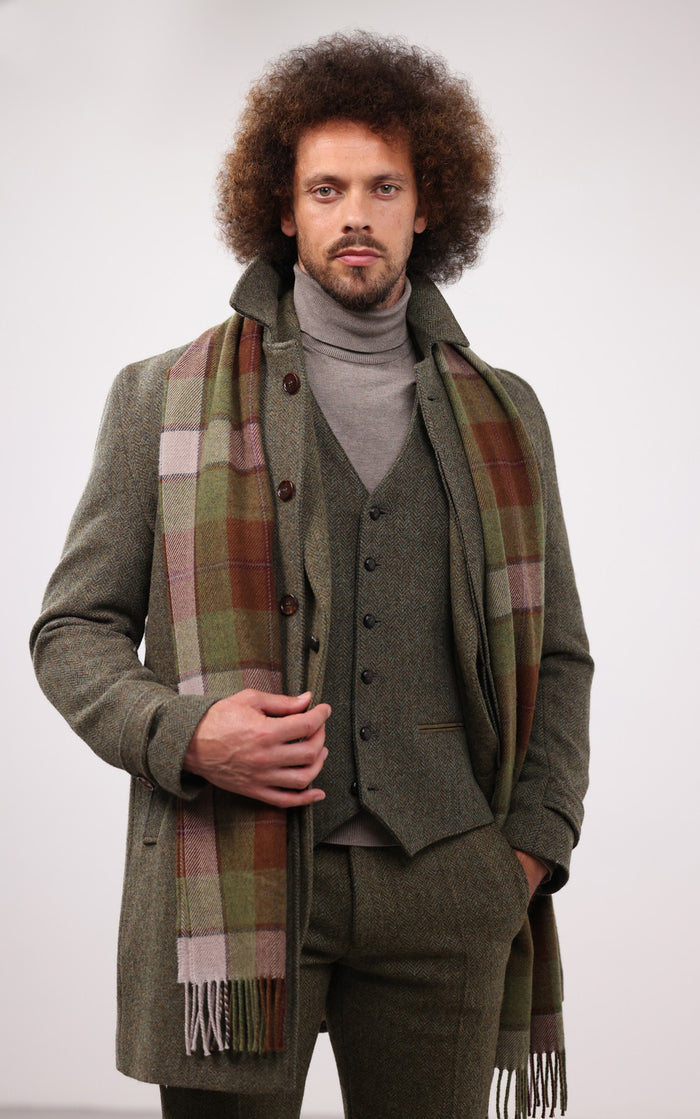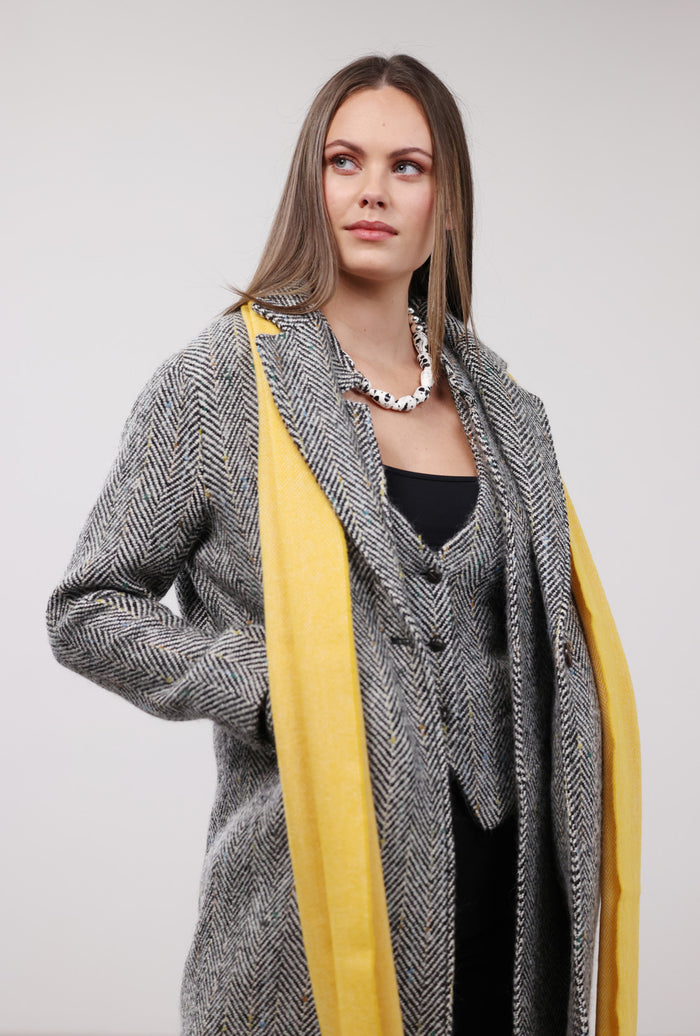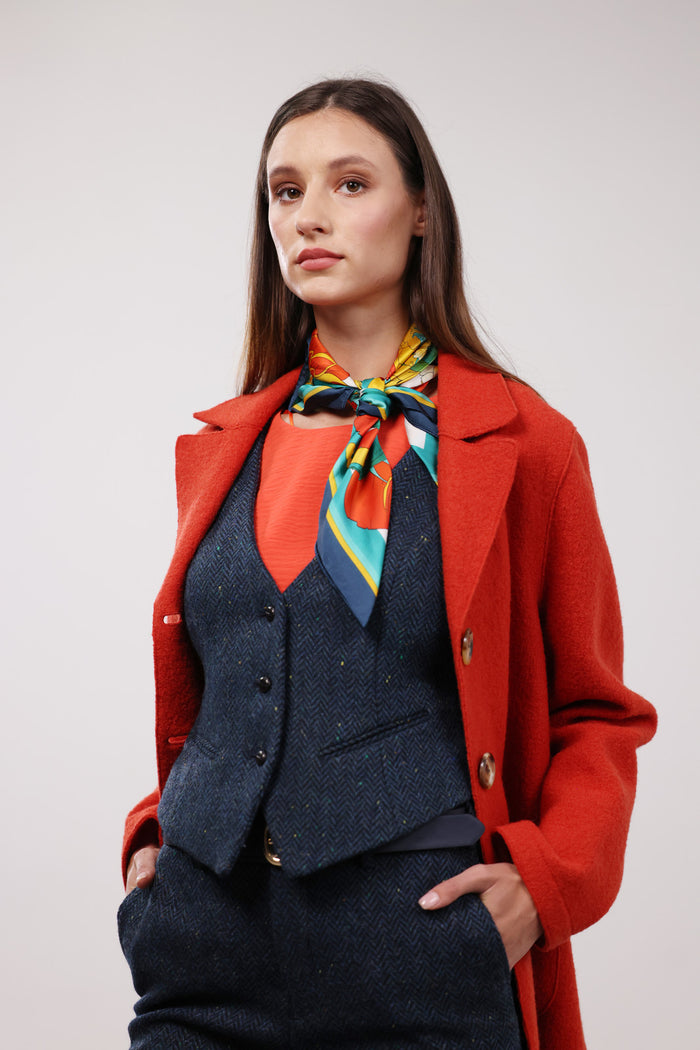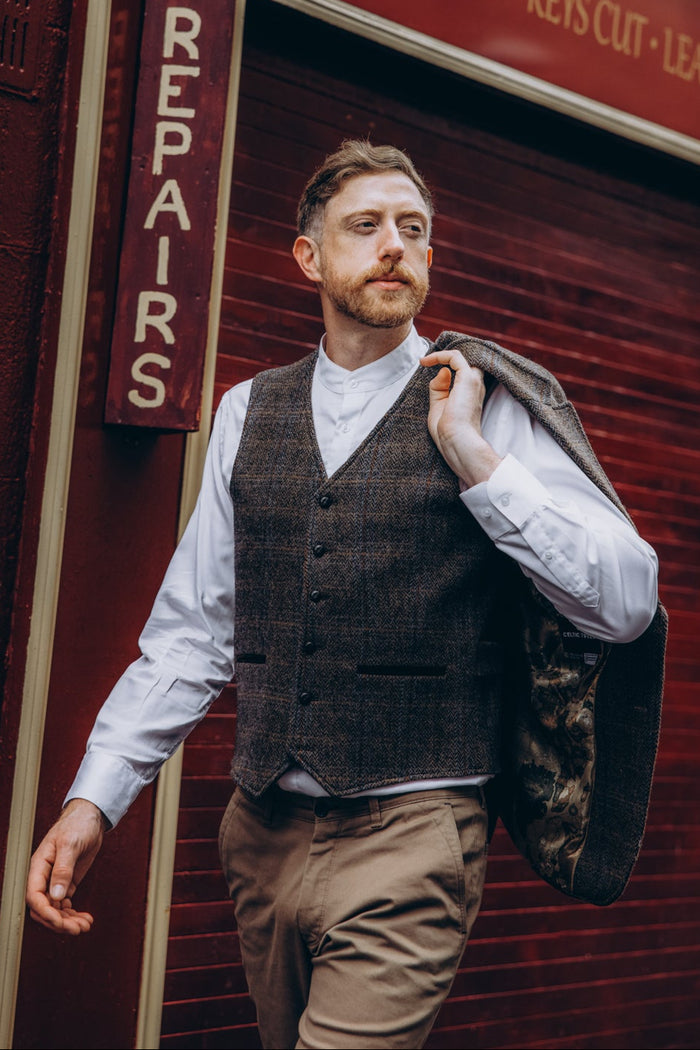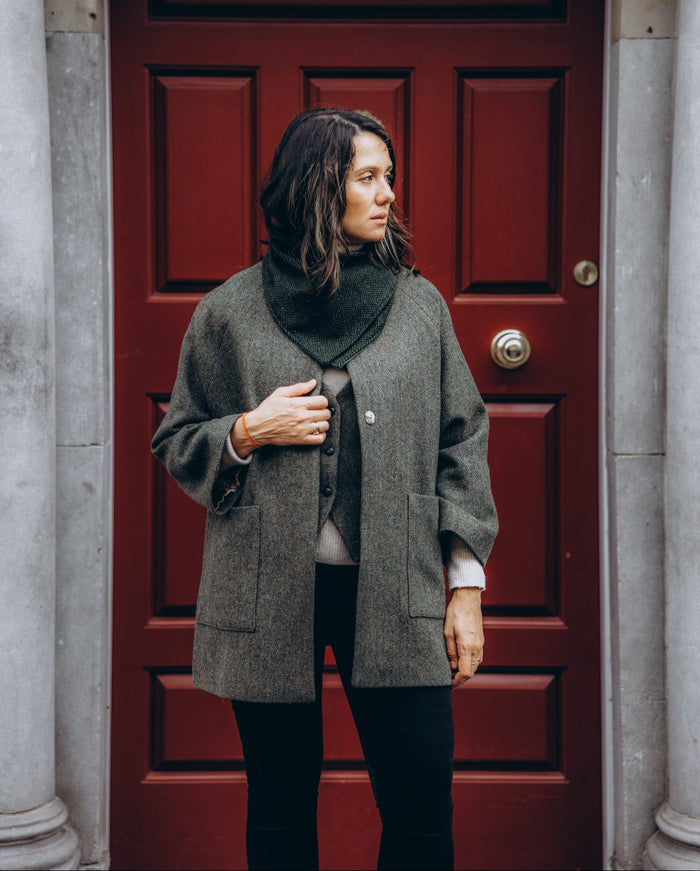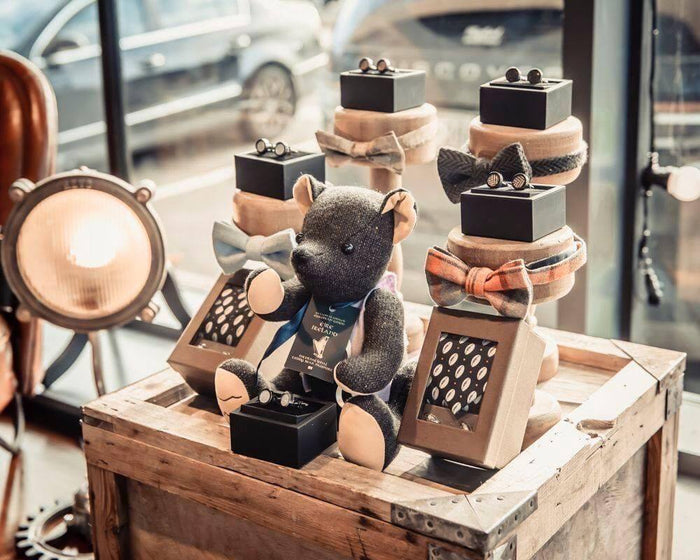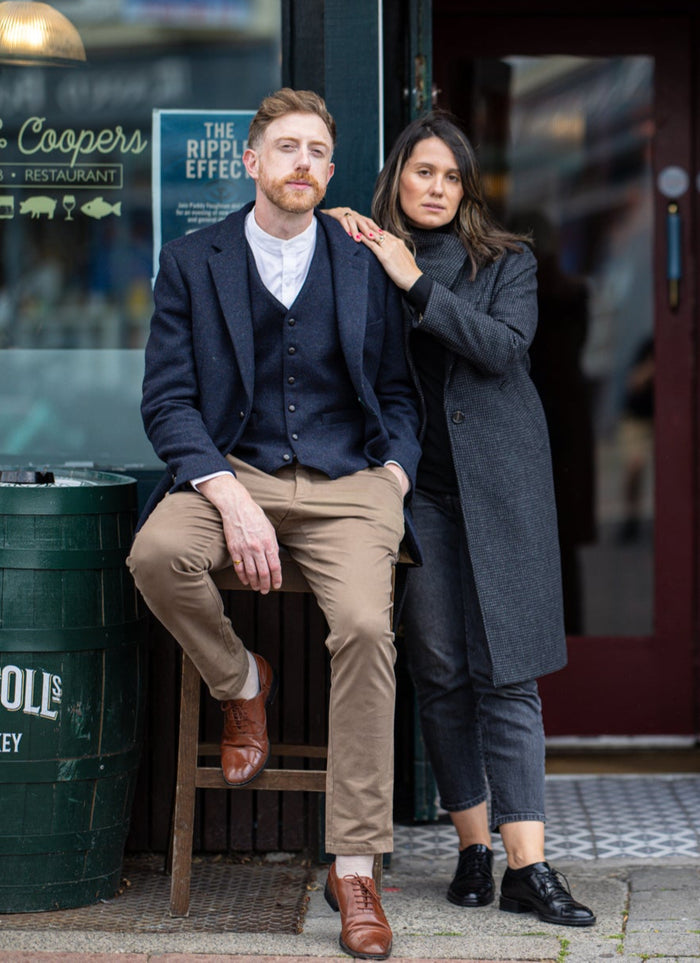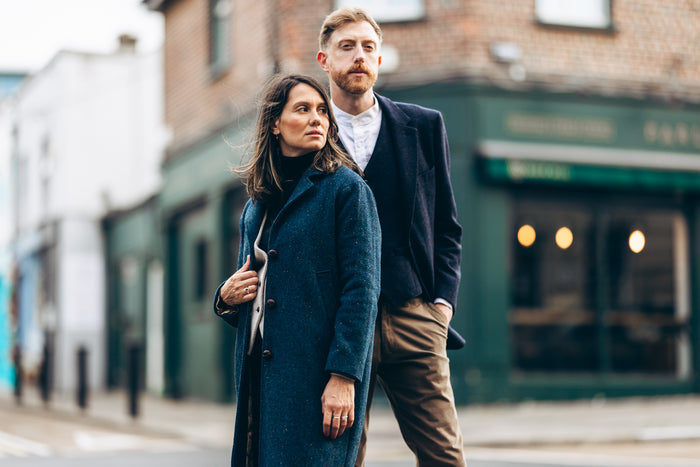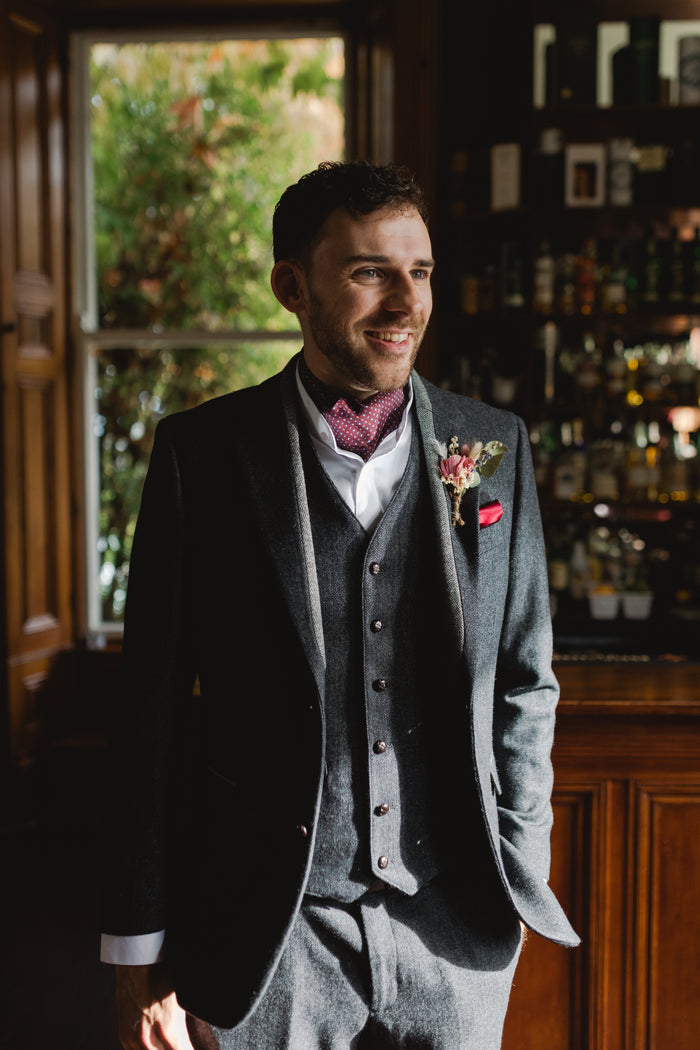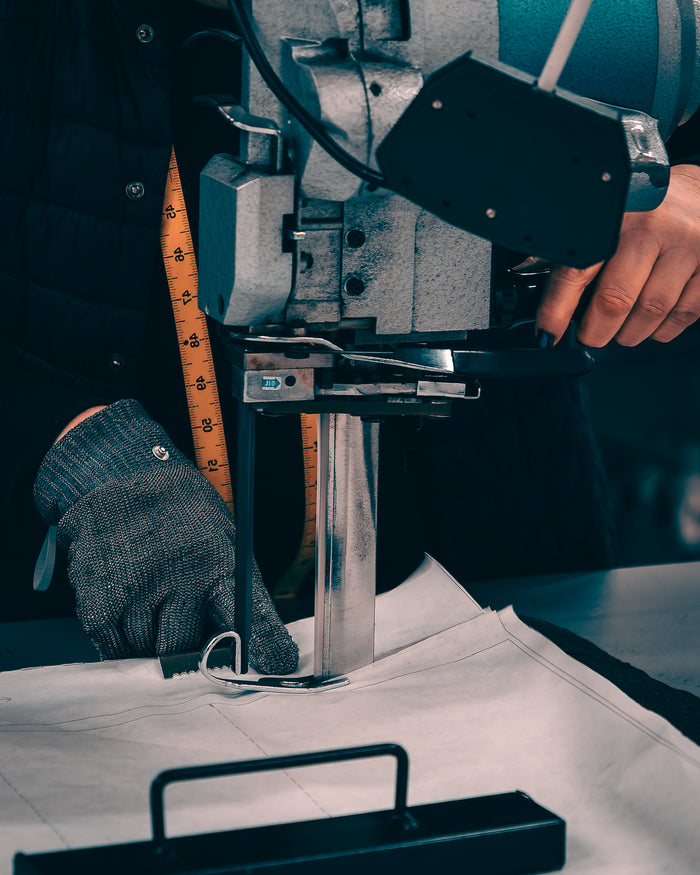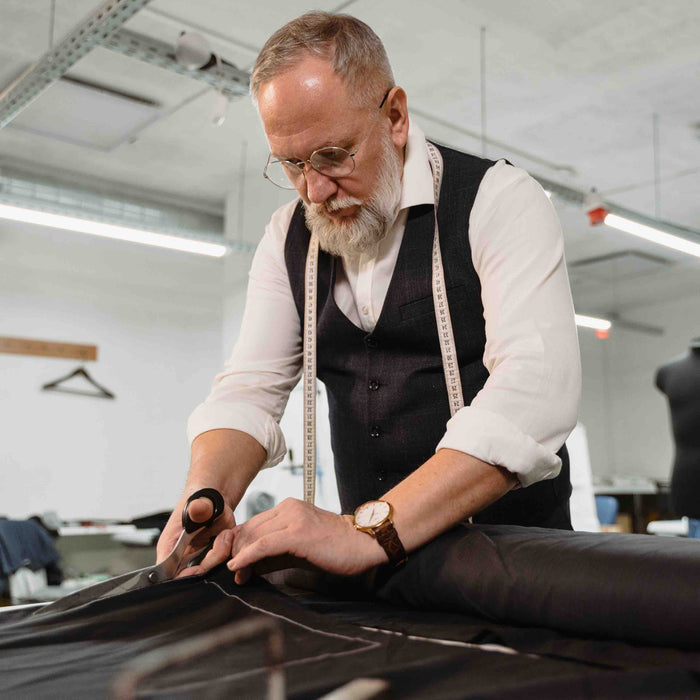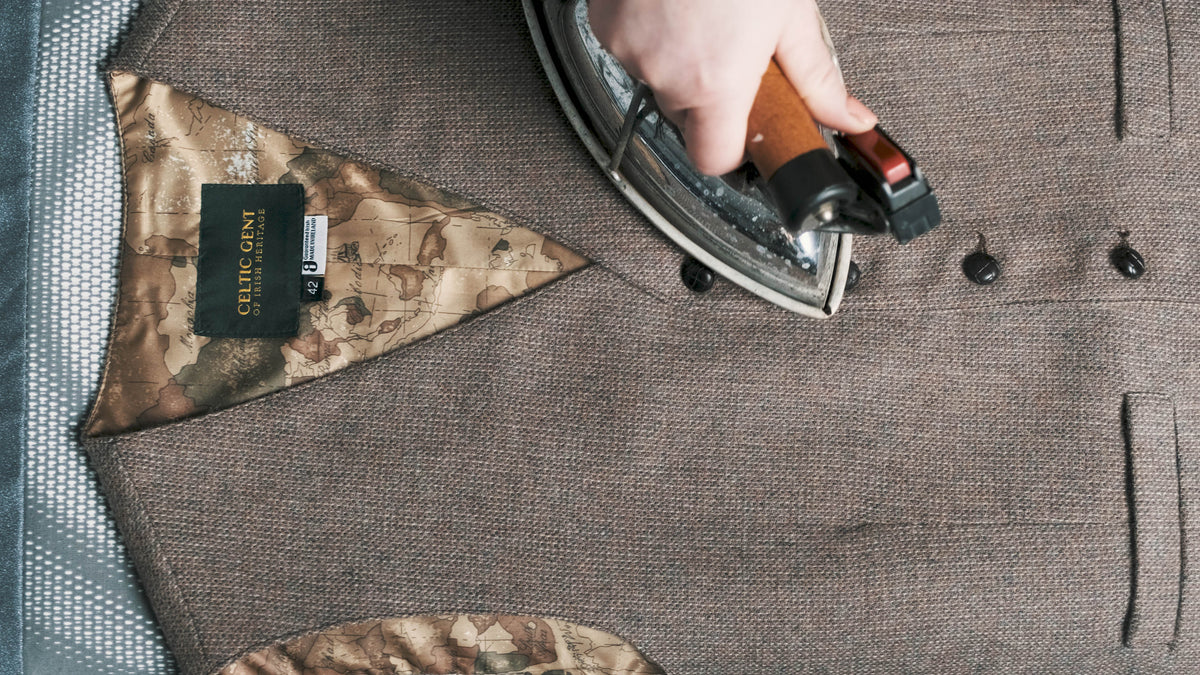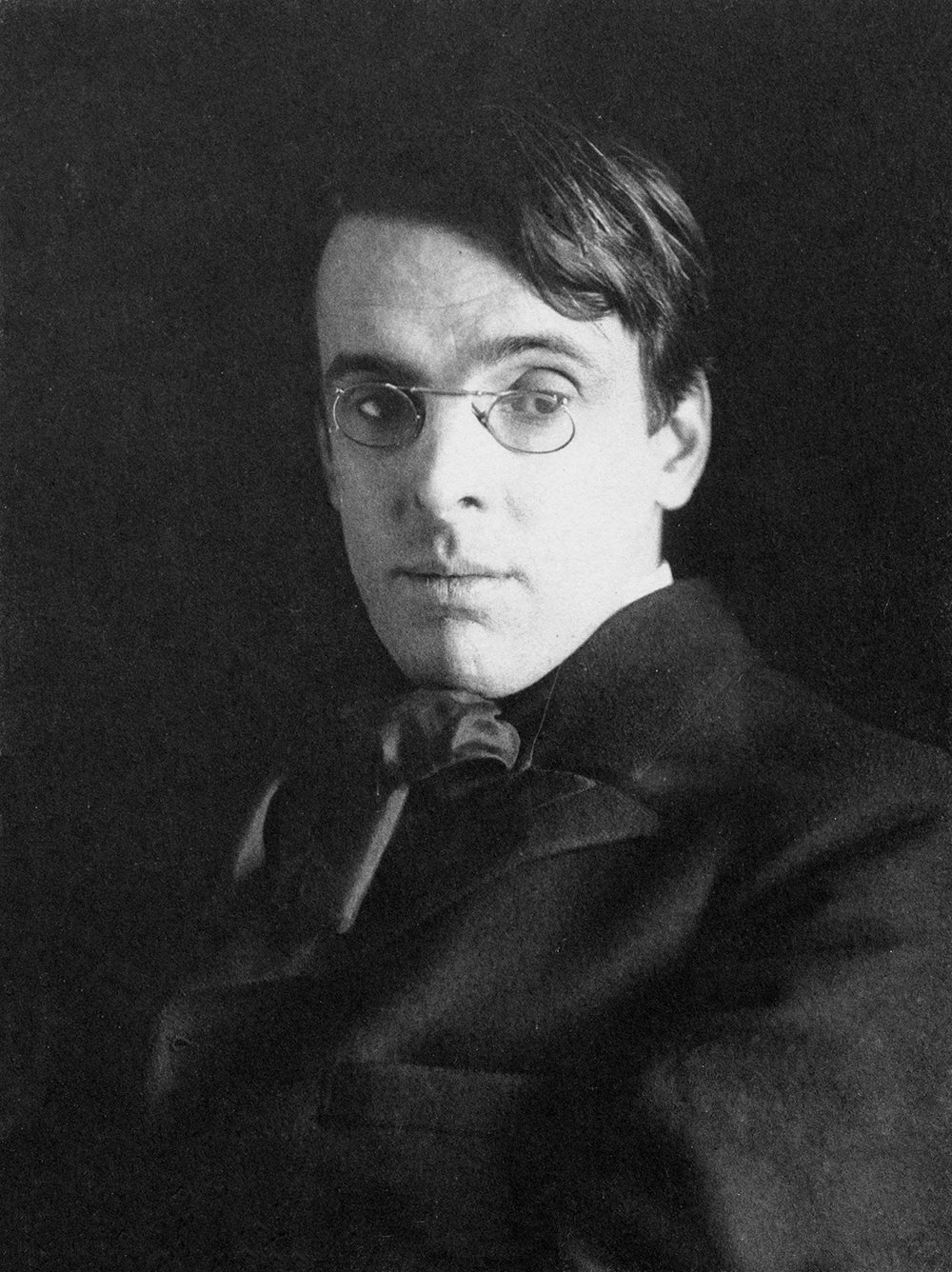
W.B. Yeats – A Suit for the Dreamer
September 01, 2025
W.B. Yeats – A Suit for the Dreamer: Dressing in the Elegance of the Past
W.B. Yeats was a poet of romance, myth, and nostalgia—much like the enduring charm of our heritage tweed jackets. This piece explores the timeless elegance of Yeats’ world and how refined tailoring connects modern men to a legacy of poetry, passion, and artistry.
The Poet of Romance & Myth
Yeats’s fascination with Irish folklore emerged during his childhood in Sligo. His first major step into the world of folklore came when Ernest Rhys, editor of the Camelot Classics series, approached him to edit a new version of Croker’s Fairy Legends. However, in July 1887, the project shifted to a selection of folklore, providing an entrance into the field. Inspired by his previous experiences, Yeats was only thirty years old when Fisher Unwin published the first edition of his Collected Poems in 1895. He was heavily influenced by mysticism and the occult, seen in these pieces and those of the future. This collection comprised of poems that Yeats wished to preserve, with many revolving around a set of mystical symbols. The most prominent was the rose, embodying Irish myth, personal longing, and a unified symbolic vision that shaped the essence of his early poetic style. His poetry, especially in landmark collections like The Wild Swans at Coole (1919), Michael Robartes and the Dancer (1921), The Tower (1928), and The Winding Stair and Other Poems (1933), firmly established Yeats as one of the most brilliant and influential poets of the twentieth century. Despite being captivated and impacted by Irish folklore, Yeats was fascinated with Irish history. He gained knowledge about the history of Ireland thanks to thinkers like Giambattista Vico and Arnold J. Toynbee. Drawing on their ideas, he used myth as a lens for the progress of Irish civilization. Yeats believed that the 18th century was a golden era in Ireland’s past, and the knowledge he gained by diving into this history ultimately set him on a path to achieving his literary vision. On October 20th, 1917, Yeats would marry Georgiana Hyde-Lees, and his two children would be born a few years later. After a long and fruitful career, Yeats passed away in January 1939 while abroad. Burial arrangements couldn’t be made in Ireland, so he was buried in Roquebrune, France.

Dressed for the Theatre of Life
Yeats had a significant interest in artistic expression and self-presentation. Yeats, while remaining true to poetry, embraced visual art in almost every way imaginable. He lived among painters, shared strong opinions about individual artworks, and wrote poems reflecting these beliefs. Throughout his life, Yeats moved fluidly across the creative sphere of art, crafting bodies of work that combined poetry with the plastic arts. His love for artistic expression ultimately sculpted many of his works. Beyond the arts, Yeats admired the idea of self-presentation. Throughout his prose and poetry, he explored a lifelong fascination with crafting identity, shaping the self by thoughtfully reweaving the threads of experience. Yeats’s Autobiographies is the narrative of his own personal struggles with the journey of crafting his own personal identity. He believed that self-presentation, made with life experiences, was a crucial and deliberate act, both personally and artistically.
The Gentleman’s Wardrobe in Yeats’ Time
Tailored suits, waistcoats, and classic menswear played a unique role in late 19th to early 20th century Ireland. Specifically in the late 19th century, tailored clothing was essential in identifying individuals. This type of clothing was closely tied to social identity; suits and waistcoats revealed the wearer’s social position and occupation. Many people in Ireland were able to read these social cues through attire. Among men, three-piece suits were relatively common, signifying the importance of menswear. Suits, during this time, were made from durable, practical fabrics like tweed and corduroy. Likewise, trousers had largely replaced breeches among men, resulting in a shift toward more modern styles. These trends, established in the late 19th century, continued over into the early 20th century. Suits and waistcoats remained symbols of social status and economic means while remaining an aesthetic choice.

Tweed & Poetry: A Shared Craftsmanship
Tweed and poetry, although two very different things, share many commonalities, especially those relating to patience, artistry, and detail. Tweed weaving and poetry writing both demand time and deliberate effort. Just as a tweed artisan patiently and precisely weaves, a poet carefully chooses each word and crafts each line to evoke emotion and meaning. Attention to detail is a necessity for creating authentic and elegant results. Likewise, they require an art-like approach; both tweed and poetry are rooted in tradition, yet open to personal expression. Tweed patterns directly reflect the weaver’s creativity just as a poem represents the poet’s voice. They both capture a timeless story, aimed at the enjoyment of those who value craftsmanship, meaning, and the quiet beauty found in detail. Neither tweed weaving nor poetry can be rushed. Both require a mindful pace to nurture inspiration and skill, emphasizing the importance of the journey instead of finishing the task. These ancient traditions are ultimately rooted in likeness, requiring a wide array of disciplines to truly come alive.
From the Abbey Theatre to Modern Wear
Tweed and linen have evolved significantly over time, seeing shifts in usage and style. Tweed, originally woven by hand on simple looms, evolved and reinvented itself into a fashion statement. Tweed began as a home-based market before taking off in the 17th century. As popularity grew, new inventions were made, helping make tweed more accessible. In modern times, companies like Chanel have incorporated the timeless fabric into their designs. Younger, unconventional designers have offered a refined take on tweed, capturing the modern consumer’s attention. These fresh new styles resonate with youth culture and are now influencing mainstream fashion. Major brands like J Crew and Topman are also embracing tweed in their current collections, signaling its modern-day revival. Linen, beginning as a fabric of the elites, was a prime good during early trade routes, spreading all over the world. The production of linen saw transformational changes during the Industrial Revolution due to mechanization. In the 20th century, improved processing methods revived linen, making it softer and more appealing to fashion designers. The natural look, breathability, and sustainability of the fabric provided unique qualities for everyday styles. Even today, these benefits continue to keep designers and manufacturers interested in linen.

Poetry in Motion
At Celtic Tweed, we strive to incorporate literary-inspired, heritage tailoring into our modern wardrobe. It is imperative that we pay homage to the great historians of Irish culture and history like Yeats. Known for his transformational poetry and impact on Ireland, Yeats was a revolutionary figure. His literary works stimulated new ways of approaching life, and here at Celtic Tweed, we channel that vision into our craft. With pieces like our W.B. Yeats Blue Slim Fit Jacket and the Yeats Blue Herringbone Tweed Waistcoat & Vest, we strive to bring his era to life. With exceptional tailors who blend time-honored techniques with contemporary design, we create clothing that celebrates Ireland’s rich cultural legacy while embracing the modern wardrobe’s versatility and sophistication. Discover the timeless spirit of Ireland with Celtic Tweed.
Sources:
- https://web.uwm.edu/lib-omeka-spc2/exhibits/show/yeats/mysticism/folkloremyth UWM
- https://www.researchgate.net/publication/357397991_Irish_Nationalism_in_the_Poetry_of_WB_Yeats
- https://courses.nus.edu.sg/course/ellpatke/miscellany/painting/yeats%20among%20painters.htm National University of Singapore
- https://oajournals.fupress.net/index.php/bsfm-sijis/article/view/7151/7149
- https://www.tandfonline.com/doi/full/10.1080/03612112.2022.2039484?scroll=top&tab=permissions
- https://earthytextiles.com/blogs/blog/a-timeless-fabric-the-historical-evolution-of-linen Earthy Textiles
- https://www.mariekelly.ie/fashion/thoroughly-modern-tweed Marie Kelly
- https://www.britannica.com/biography/William-Butler-Yeats Britannica
- https://www.nobelprize.org/prizes/literature/1923/yeats/biographical/#:~:text=His%20poetry%2C%20especially%20the%20volumes,century%20poets%20writing%20in%20English Nobel Prize


